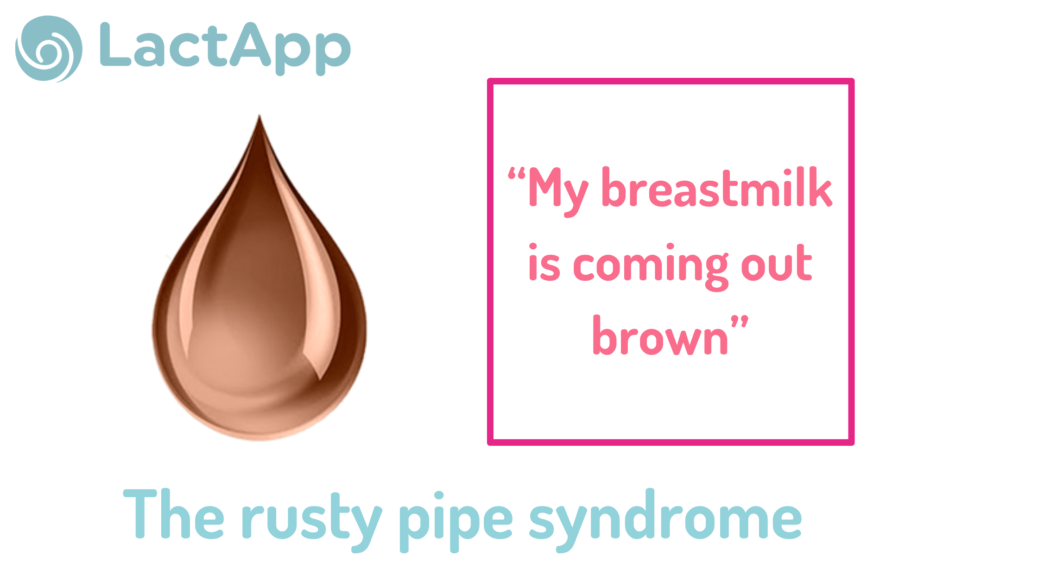
When breastmilk comes out brown after birth: rusty pipe syndrome
“Hi, I’m going to have another baby soon; I’m now 34 weeks. I would like to ask you about what happened to me when I had my first baby because nobody knew what it was…
My baby was breastfeeding just after the birth. Then, the midwife told me that at the end of the feed, I should put some colostrum on my nipple. And when I did, I realized that my colostrum was not yellow; it was brown; I was in shock! Then, I was told that my milk was not good and that it was better for my baby not to have any of it. So I stopped breastfeeding.”
Human milk is never white. Yes, you read that right. The cow’s milk you buy in the supermarket goes through different processes and is homogenized, so it’s white and doesn’t split into layers.
Breastmilk is colorful: colostrum is yellow or orange, stored breastmilk can be bluish or greenish, and milk after weaning can be green. And yes, during the first days of life, colostrum or breastmilk can be brownish and of a very striking brown color.
Why does it get that color?
During pregnancy, all breast cells prepare for breastfeeding. The breasts grow, and blood supply increases throughout the breasts. During this stage and in the first days of breastfeeding, it is easy to see the veins marked on the breasts and the cleavage area going towards the nipple.
Likewise, the alveoli, the cells where breastmilk is produced and the milk ducts prepare for milk production. This can lead to tiny bleedings, which, once mixed with milk or colostrum, result in dark-colored milk. Lactation consultants also call this the rusty pipe syndrome.
How long will my breast milk come out brown?
Usually, this is a temporary situation that only lasts for a few days and then disappears completely. There is nothing you need to do because once the bleeding has stopped, breastmilk will come out again in its usual color.
Is it dangerous?
No, it’s not dangerous, neither for the mother nor the baby. In fact, you don’t need to do anything special; you don’t have to “pump and dump,” and you don’t need to stop breastfeeding.
Just keep in mind that your baby may have darker stools, or there may be some threads or mini black dots, which are the remains of digested blood. There is no problem for your baby to have breast milk with a little blood in it; it’s an extra iron supplement.
Since this happened to me with my first baby, will it happen again?
Rusty pipes syndrome is more likely to happen in your first breastfeeding journey. But just as you can have a nosebleed at any time in your life, this can happen to you again as well.